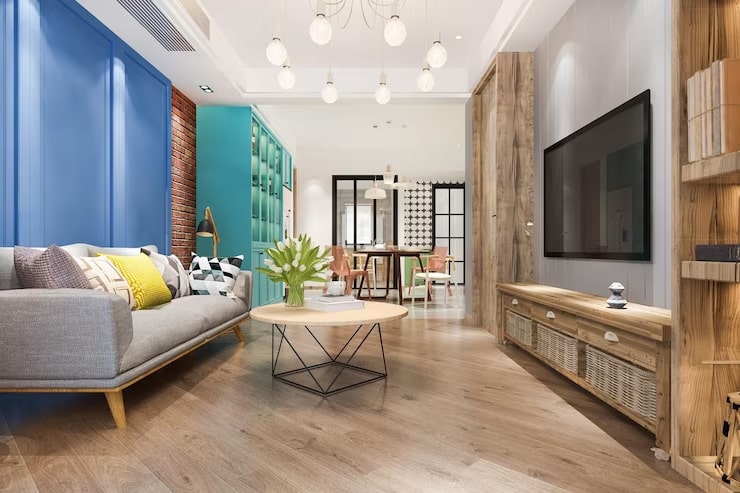In the realm of design, light wields the power to transform spaces, evoke emotions, and even alter perceptions. It’s a subtle art, playing with shadows and luminescence, to craft atmospheres that enchant and inspire.
From the soft glow of a morning sun to the harsh lines of a shadow at noon, the interplay between light and darkness shapes our experiences within a space.
This exploration delves into the techniques and philosophies behind using light to create atmosphere, highlighting the role of modern designer lighting and the timeless dance between shadow and light.
The Canvas of Light: Setting the Stage
Imagine entering a room where the light itself guides your gaze, subtly emphasizing shapes, textures, and colors.
This is the canvas of light, a foundational element in creating atmosphere. Modern designer lighting plays a pivotal role in this narrative, offering tools that range from the stark simplicity of a single pendant to the complex choreography of a layered lighting scheme.
These elements act not just as fixtures but as brush strokes on the canvas of our environment, shaping mood and directing attention with intention and grace.
The Spectrum of Emotion: Color Temperature and Mood
Light, in its essence, is color. The temperature of this color—measured in Kelvins—can sway a room’s ambiance from the warmth of a cozy fire to the coolness of a moonlit night.
Understanding and harnessing color temperature allows designers to evoke specific moods within a space.
Warm lights invite relaxation and comfort, making them perfect for living rooms and bedrooms, while cooler lights stimulate focus and clarity, ideal for offices and kitchens.
This spectrum of emotion, painted with light, underscores the profound impact of luminance on our daily experiences.
Shadow Play: The Beauty of Contrast
Shadows are not merely the absence of light but a dimension of their own. The deliberate use of shadows can add depth, mystery, and drama to a space, creating a visual richness that flat, uniform lighting cannot achieve.
By considering where shadows fall and how they interact with the lit areas, designers can sculpt a room’s features, highlighting architectural details or creating intriguing patterns. This shadow play, a dance between visibility and concealment, enriches the atmosphere with a dynamic, three-dimensional quality.
Layering Light: Complexity in Simplicity
A well-lit room is often the product of layering different types of light: ambient, task, and accent. Ambient lighting provides the overall illumination, setting the baseline of brightness.
Task lighting focuses on specific areas to facilitate activities, such as reading or cooking. Accent lighting, then, highlights architectural features or artwork, adding depth and interest.
This layered approach builds complexity from simplicity, allowing for flexibility in mood and function while ensuring that each area of the room is considered and catered to.
The Harmony of Technology and Tradition
In the age of smart homes and LED innovations, the potential for crafting atmosphere with light has expanded exponentially. Programmable systems offer unprecedented control over intensity, color, and timing, allowing spaces to evolve in ambiance throughout the day.
Yet, there remains a profound beauty in traditional lighting methods—candlelight, fireplaces, and natural sunlight—that technology seeks to emulate. The harmonization of these elements, old and new, defines the cutting edge of atmospheric design.
Sustainable Illumination: Eco-Friendly Choices
As we navigate the possibilities of light, the importance of sustainability comes to the forefront. Eco-friendly lighting solutions, such as LEDs and solar-powered fixtures, provide a way to craft beautiful atmospheres without compromising the health of our planet.
These technologies offer the dual benefits of reduced energy consumption and longer lifespans, demonstrating that environmental responsibility and aesthetic excellence can go hand in hand.
Lighting as Narrative: Telling Stories with Luminescence
Every light casts a story, shaping narratives within the spaces it illuminates. Through careful selection and placement of lighting, designers can tell tales of heritage in a historic home or visions of the future in a modern loft.
This storytelling through light not only enhances the physical appearance of a space but also imbues it with meaning and emotion, connecting occupants to the environment on a personal level.
The Endless Dance of Shadows and Light
The art of crafting atmosphere with light is a journey of balance, emotion, and intention. It challenges us to see not just the light but the space it defines, not just the shadows but the stories they tell. In mastering this art, we learn to manipulate the invisible, to shape experiences and emotions with the flick of a switch or the placement of a fixture.
Whether through the subtle sophistication of modern designer lighting or the primal glow of a candle, the dance between shadows and luminescence continues, an endless exploration of the power of light to transform and enchant.







